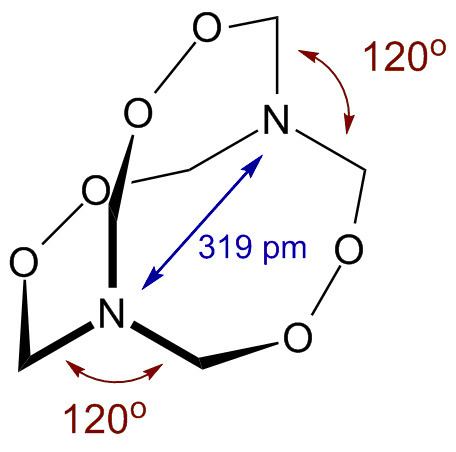Formula C6H12N2O6 Density 880 kg/m³ | Molar mass 208.17 g/mol Appearance White crystalline solid | |
 | ||
Demonstrating the properties of hexamethylene triperoxide diamine hmtd
Hexamethylene triperoxide diamine (HMTD) is a high explosive organic compound. The theorized structure lent itself well to acting as an initiating, or primary explosive. While still quite sensitive to shock and friction, it was relatively stable compared to other initiating explosives of the time, such as mercury fulminate, and proved to be relatively inexpensive and easy to synthesise. As such, it was quickly taken up as a primary explosive in mining applications. However, it has since been superseded by even more stable compounds such as tetryl.
Contents
- Demonstrating the properties of hexamethylene triperoxide diamine hmtd
- Hmtd deflagration tests hexamethylene triperoxide diamine
- Preparation and structure
- Properties as an explosive
- Terrorism
- References
Hmtd deflagration tests hexamethylene triperoxide diamine
Preparation and structure
First synthesised in 1885 by Legler, HMTD may be prepared by the reaction of an aqueous solution of hydrogen peroxide and hexamine in the presence of citric acid or dilute sulfuric acid as a catalyst.
The molecule adopts a cage-like structure.
Properties as an explosive
No peroxide has found practical use as an explosive as a consequence of the weak oxygen-oxygen bond, which leads to poor thermal and chemical stability and a high sensitivity to shock (physical impact). Like other organic peroxides such as acetone peroxide (TATP), HMTD is unstable and detonates upon shock, friction, and heat. It is, however, less unstable than many other peroxides under normal conditions; exposure to ultraviolet light increases its sensitivity. It also reacts with most common metals, which can lead to detonation. HMTD is chemically very stable when pure (free of acids, bases, and metal ions) and does not quickly sublime like its acetone counterparts.
HMTD is a more powerful initiating explosive than mercury fulminate, but its poor thermal and chemical stability prevents its use in detonators.
Terrorism
Despite no longer being used in any military application, and despite its shock sensitivity, HMTD remains a common home-made explosive and has been used in a large number of suicide bombings and other attacks throughout the world. For example, it was one of the components in the explosives intended to bomb Los Angeles International Airport in the 2000 millennium attack plots, it was used in the 7 July 2005 London bombings, and it was the planned explosive in the 2006 transatlantic aircraft plot. It was also used in the 2016 New York and New Jersey bombings.
